8 Helmut Newton Walking Women, Paris 1981 Gelatin silver print triptych. Each image 53 1/8 x 44 1/2 in. (135 x 113 cm) Each overall 67 1/2 x 58 7/8 in. (171.5 x 149.5 cm) Signed, titled, dated, numbered 3/3 and annotated 'Left panel', 'Centre panel' or 'Right panel', respectively, in ink on the reverse of each flush-mount.
Provenance Acte2 Galerie, Paris Private Collection, Europe Literature Taschen, Helmut Newton (SUMO), n.p there dated 1980 Catalogue Essay “I love women, I admire them greatly,” Helmut Newton one confessed. “And when people say ‘you use them like objects of desire,’ [I think to myself,] ‘well, I hope they are objects of desire.’ It would be terrible if they weren’t.” However, for Newton the objectification of his models was not to benefit his own pleasure, but rather, their own. Drawing inspiration from Berlin’s leading zeitgeist publications from the 1920s and 30s such as Berliner Illustrirte Zeitung and others, Newton created a working space for his models that was part decadent and part unorthodox—a safe microcosm in which fantasies became reality. And perhaps most famously of all, Newton engendered an environment in which his female models—all tall, statuesque and curvaceous—claimed the space around them with unapologetic poise and commanding sensuality. Unsurprisingly, as a photographer Newton believed that his job was to “seduce, amuse and entertain.” The work offered in the current lot perfectly embodies Newton’s approach to the profession, presenting a bold vision of beauty, power and sex. By 1981, the year the current lot was taken, the German-born Newton had established his name as a world renowned photographer, having worked extensively for the Australian, French, German and American Vogue, Playboy and Spiegel e Stern. All publications, in particular those based in Europe, granted Newton the space to experiment with a mode of fashion photography that had been previously unexplored. His models were often paired with mannequins that resembled them in appearance. By blurring the line between object and subject, Newton cleverly subverted the dynamic between the two but without deciding in which direction the subversion tilted. Models became as perfectly sculpted as objects, and objects became as desirous and animated as humans. Newton stated that he was not interested in creating images that pleased his clients, but rather some that provoked and challenged. “If there is one thing I hate,” he said, “it’s good taste. To me it’s a dirty word.” Newton’s most renowned oeuvre is Big Nudes, of which the current triptych is an outstanding example— one that has never come up on the secondary market. The images depict four models in different stages of motion. Some are engaging each other, others look beyond the frame, and one appears to lock eyes with the viewers. There is no apparent staging or direction. “It’s without any artifice,” Newton spoke of his Big Nudes. “It’s just a woman standing there; she wears high heeled shoes, nothing else. It’s almost like a passport photograph, but in the nude.” The women thus exercised unadulterated control over their bodies, their gaze and their pace. While other fashion photographers at the time evolved from a tradition of fashion photography that positioned the model as a vessel for highlighting the clothing, Newton turned the genre on its heels— boldly thrusting his models to the forefront of viewers’ consciousness as empowered, fearless and domineering agents. Their clothing became secondary, if not inconsequential, in Newton’s intent to depict a new contemporary culture that emphasized the power of an emerging independent woman. Shot from a low vantage point, his models appear monumental, larger than life, otherworldly Amazons roaming about their space. “When I start giving instructions, it’s not true anymore,” Newton later explained of his desire to let his models occupy their space without direction. The images offered in the current lot are variants of Sie Kommen, which depicts the four models marching forward. The title of that work, which translates as ‘They Are Coming’, connotes an announcement, an arrival. Yet, what the work declares is not the arrival of the models, but rather the ushering of a new era—women’s sexual freedom. The triptych format in the current lot enhances the i
8 Helmut Newton Walking Women, Paris 1981 Gelatin silver print triptych. Each image 53 1/8 x 44 1/2 in. (135 x 113 cm) Each overall 67 1/2 x 58 7/8 in. (171.5 x 149.5 cm) Signed, titled, dated, numbered 3/3 and annotated 'Left panel', 'Centre panel' or 'Right panel', respectively, in ink on the reverse of each flush-mount.
Provenance Acte2 Galerie, Paris Private Collection, Europe Literature Taschen, Helmut Newton (SUMO), n.p there dated 1980 Catalogue Essay “I love women, I admire them greatly,” Helmut Newton one confessed. “And when people say ‘you use them like objects of desire,’ [I think to myself,] ‘well, I hope they are objects of desire.’ It would be terrible if they weren’t.” However, for Newton the objectification of his models was not to benefit his own pleasure, but rather, their own. Drawing inspiration from Berlin’s leading zeitgeist publications from the 1920s and 30s such as Berliner Illustrirte Zeitung and others, Newton created a working space for his models that was part decadent and part unorthodox—a safe microcosm in which fantasies became reality. And perhaps most famously of all, Newton engendered an environment in which his female models—all tall, statuesque and curvaceous—claimed the space around them with unapologetic poise and commanding sensuality. Unsurprisingly, as a photographer Newton believed that his job was to “seduce, amuse and entertain.” The work offered in the current lot perfectly embodies Newton’s approach to the profession, presenting a bold vision of beauty, power and sex. By 1981, the year the current lot was taken, the German-born Newton had established his name as a world renowned photographer, having worked extensively for the Australian, French, German and American Vogue, Playboy and Spiegel e Stern. All publications, in particular those based in Europe, granted Newton the space to experiment with a mode of fashion photography that had been previously unexplored. His models were often paired with mannequins that resembled them in appearance. By blurring the line between object and subject, Newton cleverly subverted the dynamic between the two but without deciding in which direction the subversion tilted. Models became as perfectly sculpted as objects, and objects became as desirous and animated as humans. Newton stated that he was not interested in creating images that pleased his clients, but rather some that provoked and challenged. “If there is one thing I hate,” he said, “it’s good taste. To me it’s a dirty word.” Newton’s most renowned oeuvre is Big Nudes, of which the current triptych is an outstanding example— one that has never come up on the secondary market. The images depict four models in different stages of motion. Some are engaging each other, others look beyond the frame, and one appears to lock eyes with the viewers. There is no apparent staging or direction. “It’s without any artifice,” Newton spoke of his Big Nudes. “It’s just a woman standing there; she wears high heeled shoes, nothing else. It’s almost like a passport photograph, but in the nude.” The women thus exercised unadulterated control over their bodies, their gaze and their pace. While other fashion photographers at the time evolved from a tradition of fashion photography that positioned the model as a vessel for highlighting the clothing, Newton turned the genre on its heels— boldly thrusting his models to the forefront of viewers’ consciousness as empowered, fearless and domineering agents. Their clothing became secondary, if not inconsequential, in Newton’s intent to depict a new contemporary culture that emphasized the power of an emerging independent woman. Shot from a low vantage point, his models appear monumental, larger than life, otherworldly Amazons roaming about their space. “When I start giving instructions, it’s not true anymore,” Newton later explained of his desire to let his models occupy their space without direction. The images offered in the current lot are variants of Sie Kommen, which depicts the four models marching forward. The title of that work, which translates as ‘They Are Coming’, connotes an announcement, an arrival. Yet, what the work declares is not the arrival of the models, but rather the ushering of a new era—women’s sexual freedom. The triptych format in the current lot enhances the i
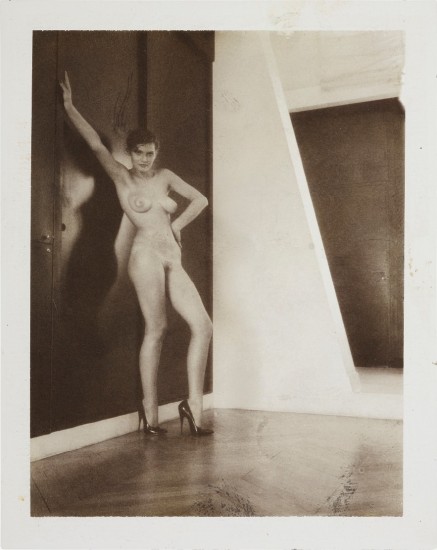

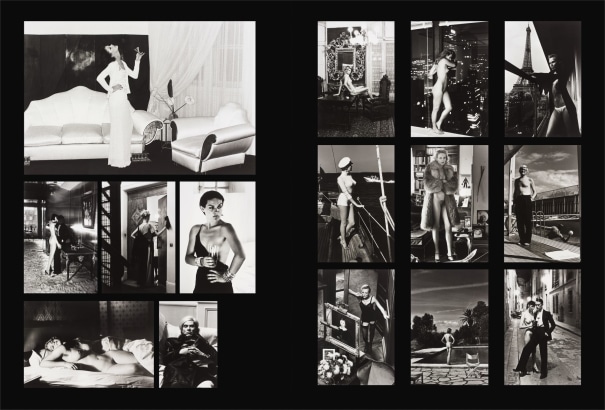

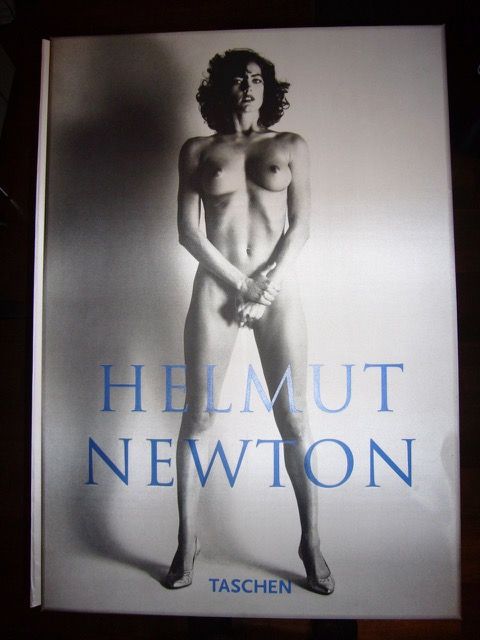
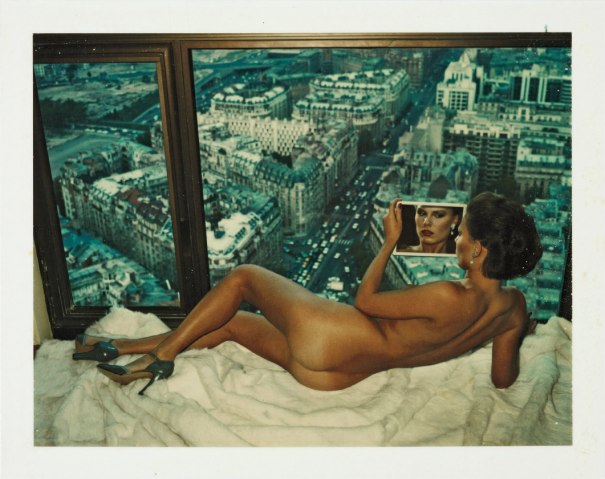

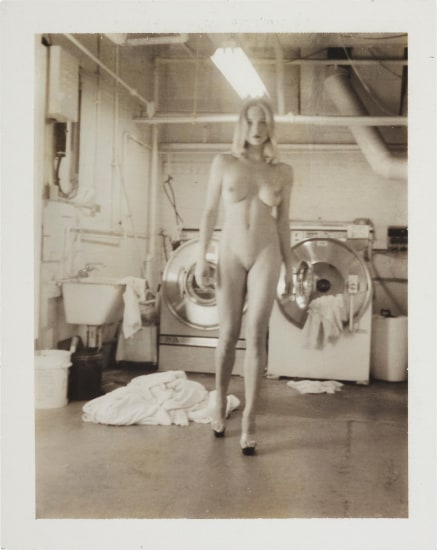
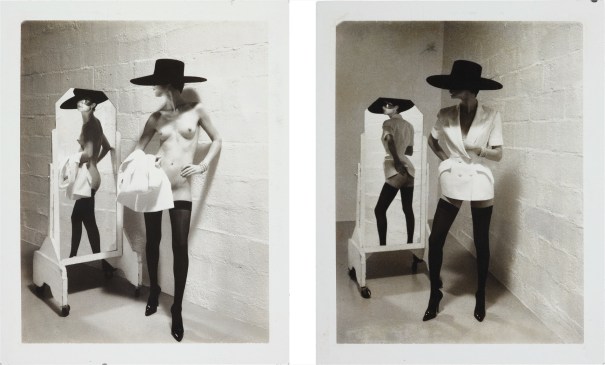


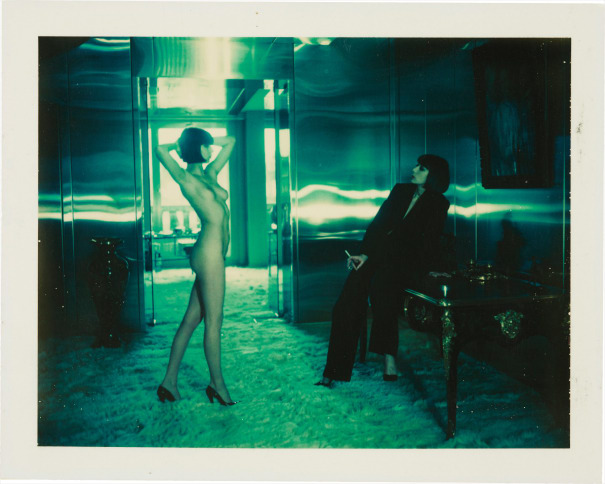


Testen Sie LotSearch und seine Premium-Features 7 Tage - ohne Kosten!
Lassen Sie sich automatisch über neue Objekte in kommenden Auktionen benachrichtigen.
Suchauftrag anlegen